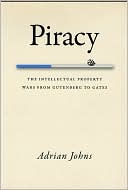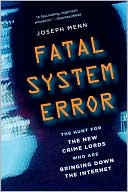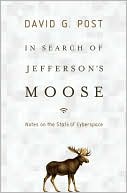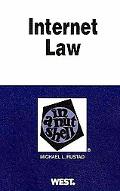Protecting Yourself Online: The Definitive Resource on Safety, Freedom, and Privacy in Cyberspace
Like any new frontier, cyberspace offers both exhilarating possibilities and unforeseen hazards. As personal information about us travels the globe on high-speed networks, often with neither our knowledge nor our consent, a solid understanding of privacy and security issues is vital to the preservation of our rights and civil liberties. In reaping the benefits of the information age while safeguarding ourselves from its perils, the choices we make and the precedents we establish today will be...
Search in google:
Like any new frontier, cyberspace offers both exhilarating possibilities and unforeseen hazards. As personal information about us travels the globe on high-speed networks, often with neither our knowledge nor our consent, a solid understanding of privacy and security issues is vital to the preservation of our rights and civil liberties. In reaping the benefits of the information age while safeguarding ourselves from its perils, the choices we make and the precedents we establish today will be central in defining the future of the electronic frontier. Since 1991, the non-profit Electronic Frontier Foundation (EFF) has worked to protect freedoms and advocate responsibility in new media and the online world. In Protecting Yourself Online, Robert Gelman has drawn on the collective insight and experience of EFF to present a comprehensive guide to self-protection in the electronic frontier. In accessible, clear-headed language, Protecting Yourself Online addresses such issues as: avoiding spam [junk mail] spotting online scams and hoaxes protecting yourself from identity theft and fraud guarding your email privacy [and knowing when you can't] assessing the danger of viruses keeping the net free of censorship and safe for your children protecting your intellectual property Produced by the leading civil libertarians of the digital age, and including a foreword by one of the most respected leaders in global business and the cyberworld, Esther Dyson, Protecting Yourself Online is an essential resource for new media newcomers and old Internet hands alike.
\ Your Role on the Electronic Frontier\ \ Determining the Future of the Internet\ The Internet, though the main focus of this book, is not the limit of its scope. Cellular phones, pagers, and handheld communications devices are all part of the topography of the electronic frontier. Each has its own unique properties and carries its own set of challenges for us as users, developers, or regulators.\ To understand our respective roles in the realm of cyberspace, it helps to know a little about what the terrain is like here--what makes up the infrastructure, the regulatory environment, the user-base. As we survey that terrain, a little history is helpful.\ \ How the Internet Came to Be\ In the 1960s, researchers began experimenting with linking computers to each other and to people through telephone hookups, using funds from the U.S. Defense Department's Advanced Research Projects Agency (arpa). arpa wanted to see if computers in different locations could be linked using a new technology known as "packet switching." This technology, in which data meant for another location is broken up into little pieces, each with its own "forwarding address," had the promise of letting several users share just one communications line. Just as important, from arpa's viewpoint, was that this allowed for creation of networks that could automatically route data around downed circuits or computers. arpa's goal was not the creation of today's international computer-using community, but development of a data network that could survive a nuclear attack.\ Previous computer-networking efforts had required a line between each computer on the network, sort of like a one-tracktrain route. The packet system allowed for creation of a data highway in which large numbers of vehicles could essentially share the same lane. Each packet was given the computer equivalent of a map and a time stamp so that it could be sent to the right destination, where it would then be reassembled into a message the computer or a human could use.\ This system allowed computers to share data and the researchers to exchange electronic mail (or email). In itself, email was something of a revolution, offering the ability to send detailed letters at the speed of a phone call.\ As this system, known as arpanet, grew, some enterprising college students (and one high-schooler) developed a way to use it to conduct online conferences. These started as science-oriented discussions, but they soon branched out into virtually every other field as people recognized the power of being able to "talk" to hundreds, or even thousands, of people around the country.\ In the 1970s, arpa helped support the development of rules, or "protocols," for transferring data between different types of computer networks. These "internet" (from "internetworking") protocols made it possible to develop the worldwide Net we have today, which links all sorts of computers across national boundaries. By the close of the 1970s, links had been developed between arpanet and counterparts in other countries. The world was now tied together in a computer web.\ In the 1980s, this network of networks, which became known collectively as the Internet, expanded at a phenomenal rate. Hundreds, then thousands, of colleges, research companies, and government agencies began to connect their computers to this worldwide Net. Some enterprising hobbyists and companies unwilling to pay the high costs of Internet access (or unable to meet stringent government regulations for access) learned how to link their own systems to the Internet, even if "only" for email and conferences. Some of these systems began offering access to the public. Now anybody with a computer and modem, persistence, and a small amount of money could tap into the world.\ In the 1990s, the Net continues to grow at exponential rates. Some trend-watchers estimate that the volume of messages transferred through the Net grows 20 percent a month. In response, government and other users have tried in recent years to expand the Net itself. Once, the main Net "backbone" in the United States moved data at 56,000 bits per second. That proved too slow for the ever-increasing amounts of data being sent over it, and in recent years the maximum speed was increased to 1.5 million and then to 45 million bits per second. Even before the Net was able to reach that latter speed, however, Net experts were already figuring out ways to pump data at speeds of up to 2 billion bits per second--fast enough to send the entire Encyclopedia Britannica across the country in just one or two seconds. Another major change has been the development of commercial services that provide internetworking services at speeds comparable to those of the government system. In fact, what started as a government experiment is now largely a private enterprise.\ \ How the Internet Works\ The worldwide Net is actually a complex web of smaller regional networks. To understand the system, picture a modern network of transcontinental superhighways connecting large cities. From these large cities come smaller freeways and parkways that link small towns, whose residents travel on narrow residential roads.\ The Net superhighway is the high-speed Internet. Connected to this are computers that use a particular system of transferring data at high speeds. In the United States, the major Internet computers theoretically can move data at rates of 45 million bits per second (compare this to the average home modem, which has a top speed of roughly 28,800 bits per second). Connected to the backbone computers are smaller networks serving particular geographical regions; these networks generally move data at speeds around 1.5 million bits per second. Feeding off these are even smaller networks or individual computers.\ Unlike commercial networks (such as CompuServe or Prodigy), the Internet isn't run by a central computer or computers; its resources are to be found among thousands of individual computers. This is both its greatest strength and its greatest weakness. Because of this broad base, it's virtually impossible for the entire Net to crash at once; even if one computer shuts down, the rest of the network stays up. The design also reduces the cost for an individual or organization to get onto the network. However, thousands of connected computers can also make it difficult to navigate the Net and find what you want--especially since different computers may have different commands for plumbing their resources. It's only recently that Net users have begun to develop the sorts of navigational tools and "maps" that let neophytes get around without getting lost.\ Protecting Yourself Online. Copyright © by Ric Eff. Reprinted by permission of HarperCollins Publishers, Inc. All rights reserved. Available now wherever books are sold.
AcknowledgmentsForewordIntroductionCh. 1Your Role on the Electronic Frontier: Determining the Future of the Internet1Ch. 2Free Expression and Censorship Online: Reconciling Individual Liberties and Community Standards19Ch. 3Privacy, Anonymity, and Secure Communications: Safeguarding Sensitive Personal and Business Data in the Information Age35Ch. 4Copyrights, Licenses, Trademarks, and Patents: Protecting Intellectual Property Online85Ch. 5The Code of Online Conduct? Learning Netiquette, Fighting Spam, Recognizing Spoof Email, Dealing with Hackers and Crackers, Treating Viruses, Spotting Scams, and Ensuring Equality115Ch. 6Beyond the Frontier169Appendix175Contributors189Index191








